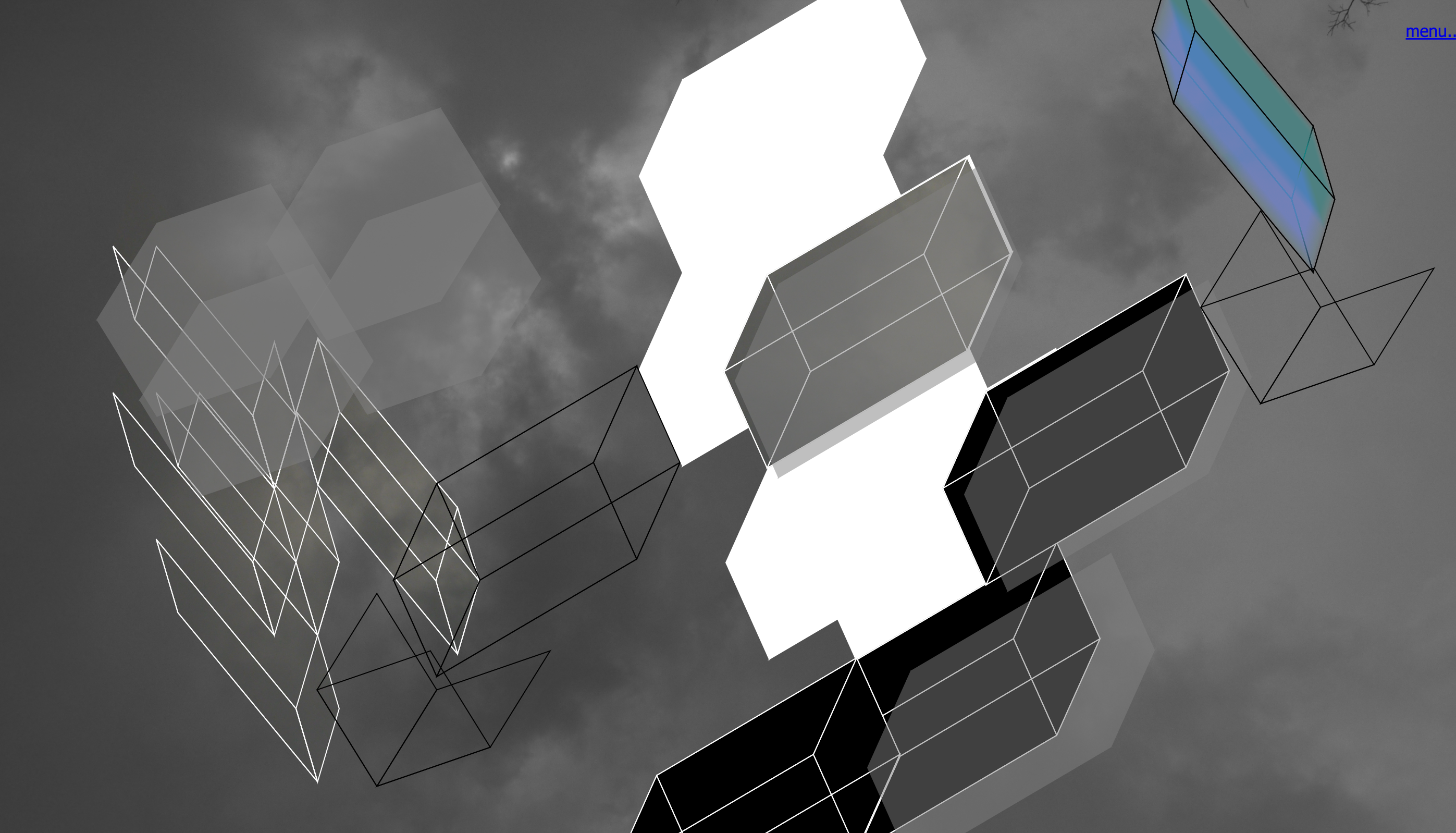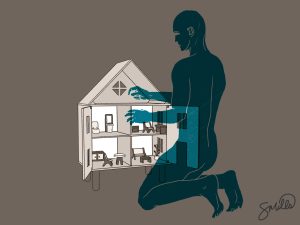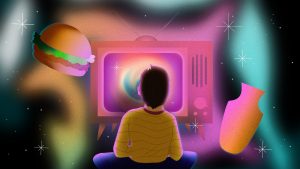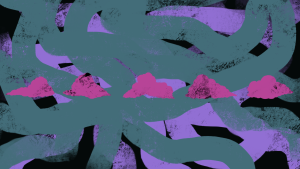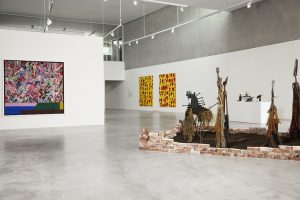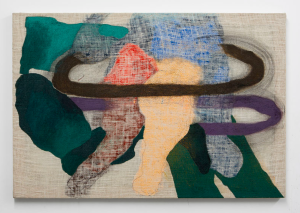The word “thing” is Germanic; old, old, old word that originally meant “an assembly to discuss matters” or, more succinctly, “an assembly.”
As “thing” transitions from meaning “assembly” to “inanimate object,” it feels like an oracular reading of what matter will be understood as: an assemblage of atoms bound into molecules, bound into forms. This table is an assemblage, this cat is an assemblage; this cat on the table is a composition of compositions. My body is an assemblage, this ecosystem is an assemblage, associated together into a pile that somehow is more than what it would have been without assemblage.
For a long time, I thought of texts, stories, art as heaps of meaning, people just throwing things (there!) together, hoping to see what new kind of thing came out from it, as though the fact of them being together is the important part, but that’s a naïve view that can only arise from denying people agency and not perceiving our intelligences; the value-neutral truth lies in the origins of “text” which—passing through many near synonymous to contemporary usages by the 14th century—was born from Latin’s textus: “a thing woven.” It is, yes, of course, about the materials in dialogue, but more important is how those materials are arranged together around each other.
Good writers (and almost all artists, in one way or another) know the acute limitations of written words, of language and its metaphors, distinct from the reality they describe. It wasn’t always this way: most letters in the Latin alphabet descend from the Phoenician alphabet, where they were pictorial representations of a creature or plant or other earthly thing (there!) that made that sound—‘s’ for ‘snake,’ ‘m’ for ‘water.’ But we see so many words we forget to distinguish them from the material world in front of us at our fingers. If you or I tried to find an onomatopoeic analog for an alphabetical letter today, what would it be? I don’t even know what kind of sound my screen makes or what shape it would take if I tried to draw it in the sand.
As Curator Rene G. Cepeda says in her curatorial statement for Morgan Green’s Text Fields: “How far can we push these ideas before they break, the metaphorical fabric tears and meaning is lost.”
Has the metaphorical framework already been broken? People’s ability to make meaning is fragile: how often do we try to process an unfamiliar experience or a complicated narrative through an Instagram story or a caption or, god forbid, a slogan? Why do we have the arrogance to rush our experiences to the digital public sphere? It’s like shoveling a novel into a sausage grinder. Let’s try a new thing! I hate my screens, but if they must be the medium for a new thing else then so be it, Morgan Green.
First, I’ll try to build a bridge out of transparent bricks. The lines are clearly marked and I Escher them impossibly together. What sort of world would we live in if I could reach out to people like this everyday; if I could step out onto my stoop and layer these weightless incandescent objects in such a way that every person could step out from their home, above these car-plagued streets? This is my favorite of the three games on Text Fields and it’s the one named Text Fields.
When I’m making the bridge, I keep thinking, “Hi, Morgan Green.” Morgan and I aren’t friends, but I like Morgan—they wrote code to make this. It feels like we’re waving at each other from different sides of a grassy, yellow field. I find this very peaceful and it’s made me want to cry more than once, waving at a friendly stranger in real-time and space in a world with minimal human modification. This is a screen, I remind myself bathed in the white glow, arranging two-dimensional, digital bricks into what I imagine as a field. I make three fields and imagine that, in each one, my partner and I have a picnic and feel clean breezes kissing our faces. It feels like somebody’s watching out for me.
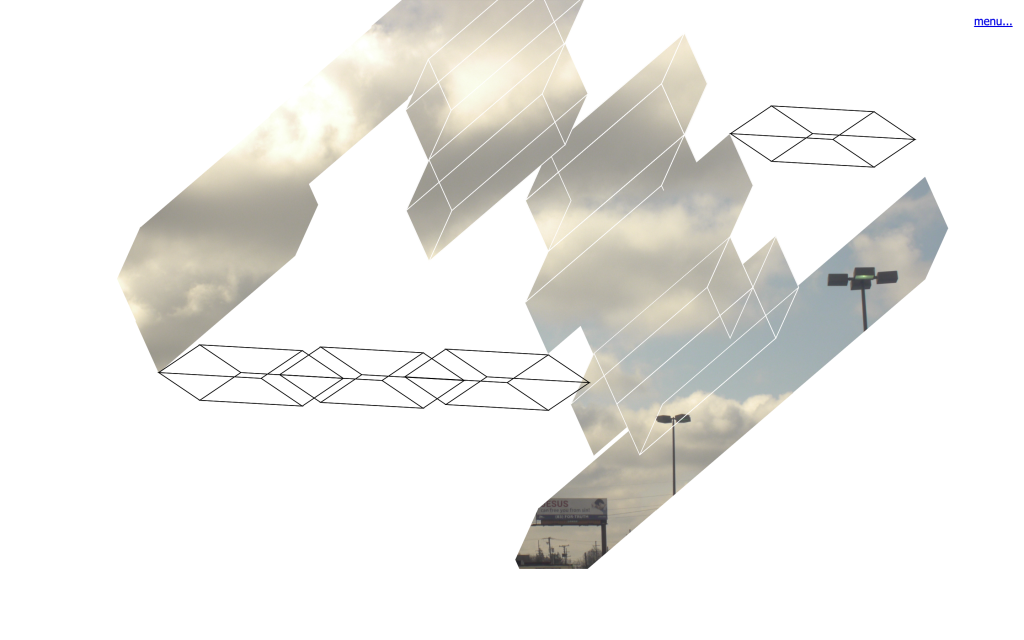
At the top of Text Fields, a description of the exhibition’s three independent pages states, “they do not have an explicit goal. Instead, they invite you to interact with curiosity and imagine an expansive notion of “text” when it comes to making meaning.”
Elaine Castillo in her excellent “How To Read Now” describes a parallel expansive notion of reading as a deep engagement in the world, (akin maybe to Pauline Oliveros’ deep listening):
“When I talk about how to read now, I’m not just talking about how to read books now; I’m talking about how to read our world now. How to read films, TV shows, our history, each other. How to dismantle the forms of interpretation we’ve inherited; how those ways of interpreting are everywhere and unseen.”
I find this form of reading to be uniquely painful and pleasurable (and spiritually, politically necessary) in the sense that it restrains me from dissociation long enough to feel the mystical water we all swim in; that despite this water, so much is discoverable and knowable until it simply is not. I don’t think this is explicitly what Morgan’s calling us towards, but these games share a mystifying, edifying, frustrating, playful quality with Zen koans and other parables that call our understanding of reality into question. I mean that my favorite kind of art circles the drain of knowability for another human’s experience and soon the tub will run out, forcing us to stare at something—without definition, without words, only a thing—ringing around the tub like beautiful filth, the remnant of what a person once knew and felt.
Marvelous, how we gravitate to each other in this way, held in orbit, in thrall of whatever essential quality this phantasm has, this unknowable heart. I think of the years I spent rotating around certain artists and collaborators, orbiting around my partner, often hilariously inarticulate as to why, only knowing that we were infuriatingly, enticingly, lovingly bound to each other by something.
Medusa is the only piece that features, in addition to Morgan, a collaborator, Andrew Bearnot. The medusa is composed of two circles—one red, one white—relentlessly spiraling closer to the viewer, towards each other, away from the viewer, towards an unseen destination, leaving an impression of their trail. The viewer has little ability to impact the exact trajectory of the circles, but we can hollow out the circles; we can rattle the circles and their trail; we can swap the background color between black and white; we can bring ourselves up close to the medusa. We cannot save a URL of this piece in a specific phase. We can screenshot, but, importantly, there’s no official artifact available.
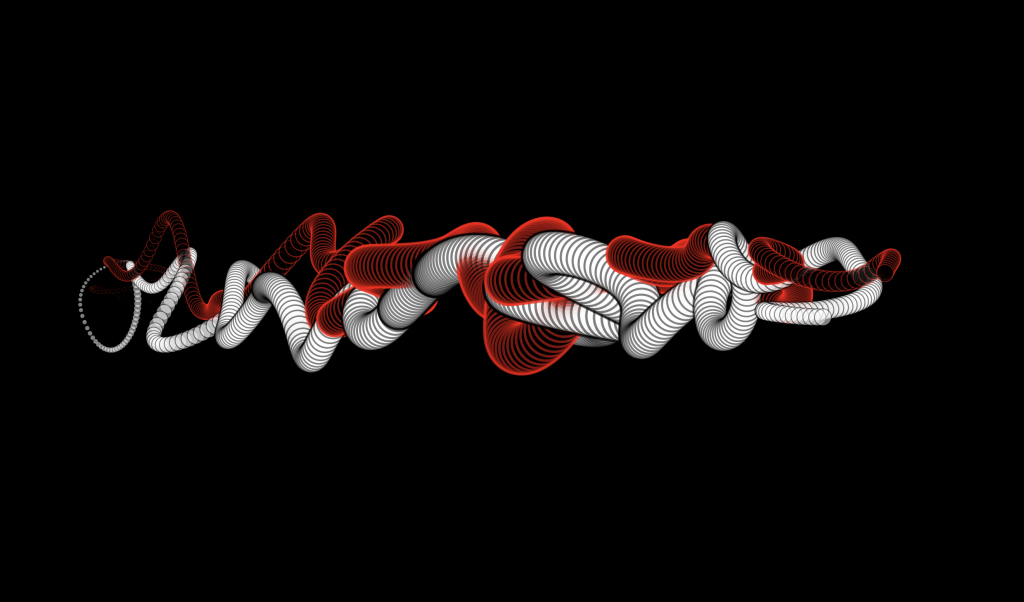
Often, I think about temporality and the fragility of a moment: the impossible task of preservation but the enduring and necessary pleasure of memory, of presence and listening and being in our bodies. I can’t describe reality exactly—none of us can—but I try to feel my toes and feet and the earth underneath; I try to move around, towards, with my partner, gently touching them on the arm, pressing my cheek into theirs, wrapping my arms around their waist as they try to do something. I reach into them and they laugh, saying some nonsense, like bom bom bom and dance with me. I try, always, to notice these things and remember as much as I can because reality, in its rawest state, is pleasurable. How a leaf looks, how the sun glints in through my window at dusk. I try to hear my friends and remember what their laughs sound like—S. with their jam-like warm chuckle; E. who hollers in a moment of joyous realization—I try to remember how all these things, gathering and arranging them around each other into a tapestry of experience that I claim as my own.
One day, I left the medusa running as I tabbed over and did other things. Six hours later, I found these two circles, still running to and from each other. At some point, they get so close, woven through each other and all I can think about is love, fucking, being alive.
The final of Morgan’s three games—by the way, they have never referred to these as games; this is my own designation—irritates me. It’s not Morgan’s fault, but my own frustration that comes from a broad or arbitrary creation of language. I’m not the type of person to frivolously use words and seeing randomly generated poetry—bound only by rhyme, syllable count, and a general close-enoughness to another word (here, for example, is a verse composed by Everyword: “borne donne sonne boone boyne“)—feels like a curse. To me, these poems are metaphors without context, without grounding—Everyword understands literally what a poem is but has no conception of the spirit of the thing. Language brought to its limitation through mundanity, a repetition of the most basic components: these are words broken down, turned into a pointless mushy interpretation of reality. There’s no foundation to return to that gives these words meaning; no “water” for M or “snake” for S.
Nonetheless, I created at least twenty variations of “poetry” over the course of three weeks. Sitting with most of them, my attention strayed quickly and I hit the button to recycle these poems, the previous set of words disappearing forever. I’ve lost many poems. I’ve lost many stories. I’ve tried to read them, only to discard them when I decided they were without meaning and gave up on them: no remembering what is pointless. I wonder how much of my life is gone because I decided it was pointless. The only poem I’ve chosen to memorialize is this one.
Despite everything, haters are defined by their bonds, aren’t they? Even as they pull away or scowl or spit in contempt at the connection, the thing is inescapably textual. Maybe, if I don’t see the point the first time, I need to look again.
You can find Text Fields here.
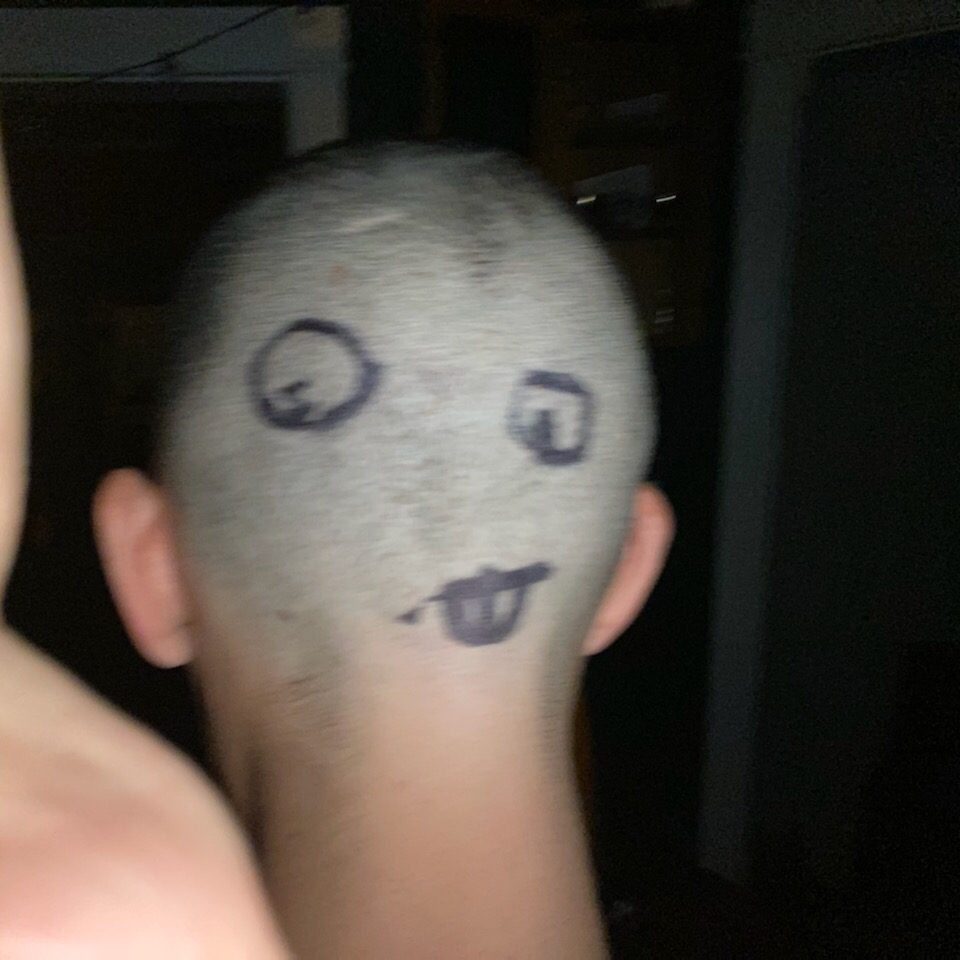
About the author: persephone Van Ort is a trans white artist living on the stolen land of the Ojibwe, Potawatomi, and Odawa peoples. It is an editor at Sixty Inches From Center as well as a visual artist, writer, director, and performer.
